Recent datasets
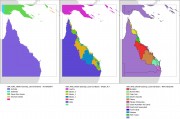
This dataset collection contains GIS layers for creating the AIMS eReefs visualisation maps (https://ereefs.aims.gov.au/). These datasets are useful for creating A4 printed maps of the Great Barrier Reef and the Coral Sea. It contains the following datasets:
- Countries - Australia plus surrounding countries at 1:10M scale. Crop of Natural Earth Data 1:10 Admin 0 - Countries dataset. Allows filtering out of surrounding countries.
- Cities - 21 Cities along the Queensland coastline.

This generated data set contains summaries (daily, monthly) of the eReefs CSIRO river tracers model v2.0 (https://research.csiro.au/ereefs) outputs at 4km resolution, generated by the AIMS eReefs Platform (https://ereefs.aims.gov.au/ereefs-aims).
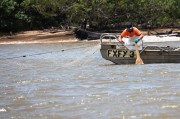
This record provides an overview of the NESP Marine and Coastal Hub study - Project 3.11 - Multi- fishery collaboration to assess population abundances and post release survival of threatened sawfish in northern Australia. For specific data outputs from this project, please see child records associated with this metadata.

This record provides an overview of the NESP Marine and Coastal Hub small-scale study - Project 3.9 - Establishing an Indigenous led approach to coordinated vertebrate pest management in northern Australia. For specific data outputs from this project, please see child records associated with this metadata.

This record provides an overview of the NESP Marine and Coastal Hub study - Project 3.5 – Supporting regional planning in northern Australia: Building knowledge, skills and partnerships for understanding seagrass distribution. For specific data outputs from this project, please see child records associated with this metadata.

This record provides an overview of the NESP Marine and Coastal Hub small-scale study - Project 3.4 – Better Management of Catchment Runoff to Marine Receiving Environments in Northern Australia. For specific data outputs from this project, please see child records associated with this metadata.

This record provides an overview of the NESP Marine and Coastal Hub small-scale study - Project 3.2 - Developing a National Indigenous Environmental Research Network – Marine and Coastal research case studies. For specific data outputs from this project, please see child records associated with this metadata.
This metadata record describes vertical profile data from Conductivity Temperature and Depth (CTD) profilers collected through in situ monitoring by the Great Barrier Reef Marine Monitoring Program for Inshore Water Quality (MMP WQ). A full description of the MMP WQ and its associated datasets can be found in the parent metadata record linked above.
The Great Barrier Reef Marine Monitoring Program for Inshore Water Quality (MMP WQ) has monitored inshore water quality of the Great Barrier Reef (GBR) lagoon since 2005 through the collection of in situ water chemistry data, along with time-series of temperature, salinity, fluorescence, and turbidity. This program is a partnership between the Great Barrier Reef Marine Park Authority, the Australian Government, the Australian Institute of Marine Science (AIMS), James Cook University (JCU), and the Cape York Water Partnership (CYWP).
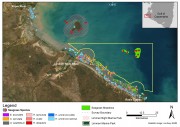
This dataset summarises benthic surveys in Marra Sea Country, including the Limmen Marine Park (Commonwealth) and Limmen Bight Marine Park (Northern Territory) into 4 GIS shapefiles.
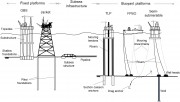
This dataset consists of an Excel spreadsheet representing an expert elicitation process of determining priority research areas for the decommissioning of ocean-based oil and gas structures. Further description of this process is provided in the 'Offshore decommissioning horizon scan: Research priorities to support decision-making activities for oil and gas infrastructure' paper by Sarah Watson et. al. 2023 https://doi.org/10.1016/j.scitotenv.2023.163015.
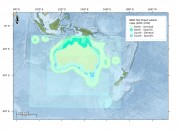
This dataset contains 63 shapefiles that represent the areas of relevance for each research project under the National Environmental Science Program Marine and Coastal Hub, northern and southern node projects for Rounds 1, 2 & 3.
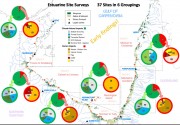
The major estuaries and their tidal wetlands of the Gulf of Carpentaria were impacted by mass dieback of mangroves in 2015-2016. To assess the full extent of the dieback and the major changes in the wetland areas, surveys in 2017 and 2019 were conducted along 31–37 major estuary mouths.
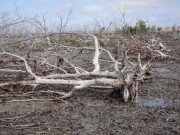
Vegetation and Elevation surveys were conducted at four sites in the Gulf of Carpenteria to provided crucial validation of observations made from aerial surveys and provided further significant insights of the impacts and subsequent changes that occurred across the Gulf coastline up to late 2019.
This dataset is an extract and collation of 4 months of data from the Craft Tracking System run by the Australian Maritime Safety Authority (AMSA). This dataset shows the location of cargo ships, fishing vessels, passenger ships, pilot vessels, sailing boats, tankers and other vessel types at 1 hour intervals.
The Craft Tracking System (CTS) and Mariweb are AMSA’s vessel traffic databases. They collect vessel traffic data from a variety of sources, including terrestrial and satellite shipborne Automatic Identification System (AIS) data sources.
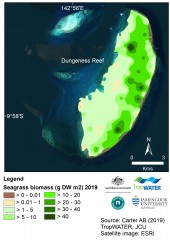
This dataset summarises intertidal benthic surveys of Dungeness Reef, Torres Strait, in February 2019 into 3 GIS shapefiles. The site shapefile describes (1) seagrass presence/absence and (2) species composition at 92 sites. The meadow shapefile describes seagrass community for the reef-top meadow. The interpolation shapefile describes variation in seagrass biomass across sites for the meadow.

This dataset shows the tiling grid and their Row and Path IDs for Landsat 4 - 9 satellite imagery. The IDs are useful for selecting imagery of an area of interest. Landsat 4 - 9 are a series of Earth observation satellites, part of the US Landsat program aimed at monitoring Earth's land surfaces since 1982.
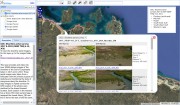
This project investigated the cause of the extensive areas of mangroves across the Gulf of Carpentaria which died in late 2015. Images from local fisherman showed extended impacted areas of more than 1,000 km where at least 7,400ha of mangroves had died in a matter of months. The project mapped the extent of the mass die-back, conducted aerial surveys to quantify shoreline condition, field studies to validate remote assessments and engaged with local aboriginal ranger groups to raise capacity for monitoring.
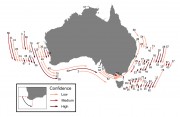
This dataset consists of the historical range limits and poleward-most extent of recent extralimital occurrence of 82 potential marine species’ range extensions around Australia (NSW, QLD, SA, TAS, VIC and WA) revealed by an assessment of citizen scientists observations from Redmap, Reef Life Survey, and iNaturalist from 2013–2022.

This dataset consists of seagrass shoot height and biomass assessments from an experiment which compared control plots to exclusion cage plots which prevented megaherbivore grazing. This experiment ran at two sites from September 2021 to April 2022.



